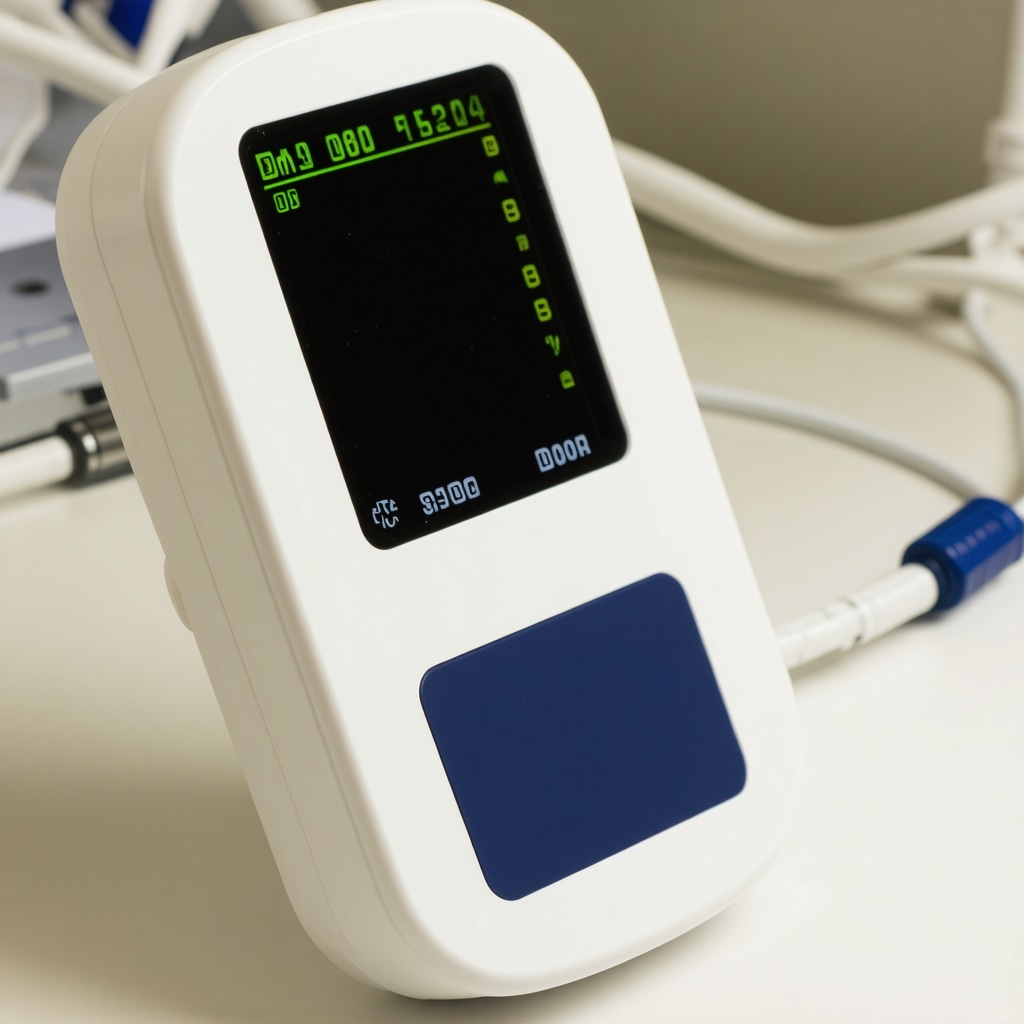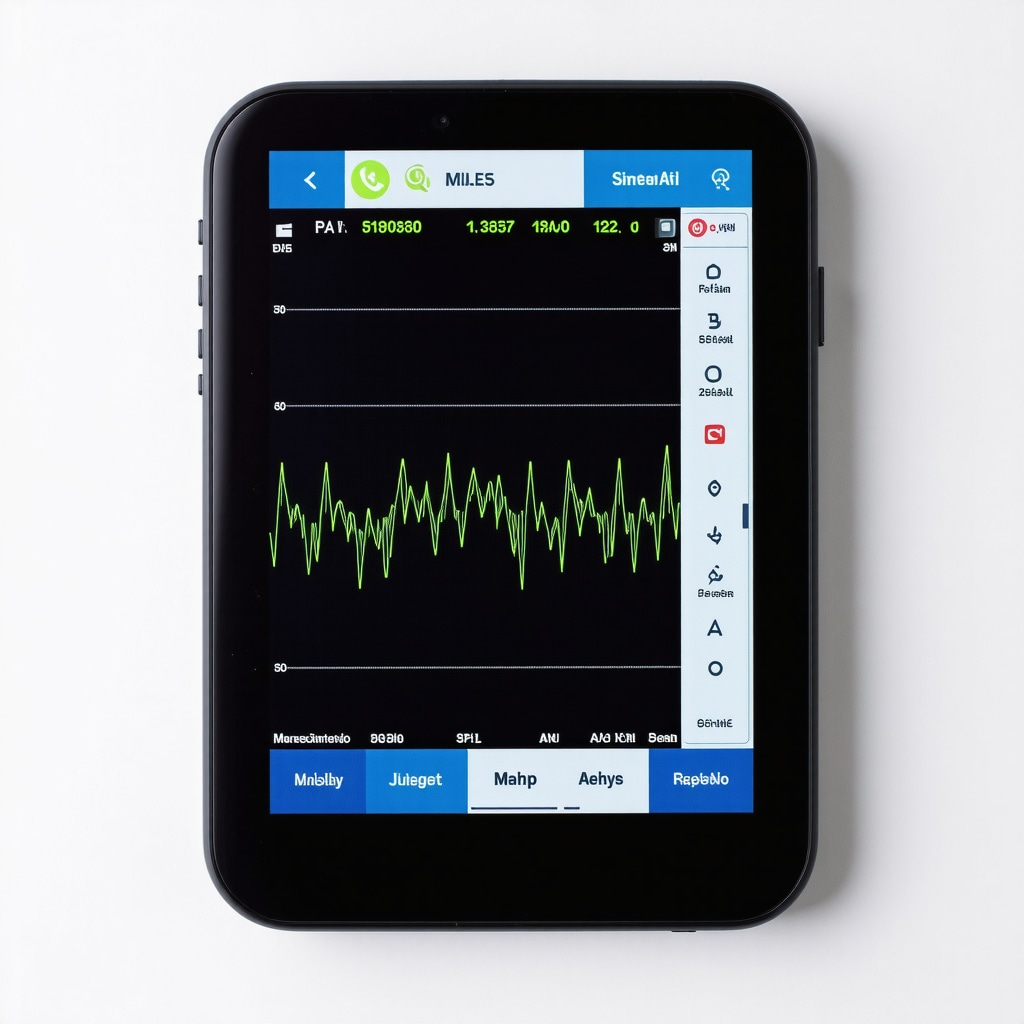Understanding the Landscape of Tirzepatide Therapy in New Jersey: A Deep Dive for Healthcare Professionals
As obesity medicine advances, physician supervised Tirzepatide treatment plans in NJ have emerged as a cornerstone of personalized, evidence-based weight management strategies. This article explores the complex interplay of clinical protocols, regulatory considerations, and patient-centered care that underpin successful Tirzepatide applications, emphasizing the importance of integrating cutting-edge research with practical expertise.
The Scientific Foundations and Clinical Efficacy of Tirzepatide in NJ
Derived from GLP-1 receptor agonist technology, Tirzepatide’s dual mechanism offers unparalleled potential for sustainable weight loss. Recent studies, such as those published in the New England Journal of Medicine, substantiate its efficacy in reducing adiposity through appetite regulation and metabolic modulation. In NJ clinics, practitioners are leveraging these insights to tailor treatment regimens that optimize long-term outcomes while minimizing adverse effects.
Complex Challenges in Designing Physician-Led Tirzepatide Protocols
Developing individualized treatment plans involves nuanced considerations, including dosing schedules, injection techniques, and monitoring parameters. Advanced practitioners must navigate regulatory frameworks, such as FDA approvals and state-specific guidelines, to ensure safety and compliance. Moreover, integrating lifestyle counseling with pharmacotherapy enhances success rates, necessitating a multidisciplinary approach grounded in expert clinical judgment.
Addressing Patient Concerns and Enhancing Treatment Adherence
Patients often inquire about the long-term safety and efficacy of Tirzepatide. As experts, clinicians must provide transparent, evidence-based guidance, addressing issues like injection site reactions, glycemic control, and weight maintenance. Establishing trust through comprehensive education is vital for adherence, especially in complex cases involving comorbidities such as diabetes or hypertension.
What are the latest advancements in optimizing Tirzepatide dosing for diverse patient populations in NJ?
Recent innovations include personalized titration strategies, utilization of weekly injection schedules, and integration with metabolic monitoring tools. Ongoing research aims to refine protocols for specific cohorts, including individuals with severe obesity or metabolic syndrome, ensuring maximal efficacy while safeguarding safety. For in-depth guidance, refer to our NJ expert guide on safe Tirzepatide injections.
Healthcare professionals are encouraged to stay abreast of emerging data and participate in continuous education to elevate standards of care. Contributing insights and sharing clinical experiences further enriches the field, fostering a collaborative environment for innovation.
Explore more about safe, physician supervised weight loss strategies by visiting our contact page and join the community dedicated to advancing obesity medicine in NJ.
Unlocking Precision in Tirzepatide Dosing: The Next Frontier in NJ Obesity Treatment
As the field of obesity medicine evolves, clinicians in New Jersey are increasingly adopting sophisticated, personalized approaches to Tirzepatide dosing. Moving beyond one-size-fits-all protocols, experts are leveraging advanced metabolic monitoring, genetic insights, and patient-specific factors to tailor treatment plans that maximize efficacy and safety. This nuanced strategy not only enhances patient outcomes but also aligns with the broader trend toward precision medicine in weight management.
Precision Dosing: How Technology and Data Drive Better Results
Modern practitioners utilize a combination of continuous glucose monitoring, body composition analysis, and digital health tools to inform dosing adjustments. For instance, integrating data from wearable devices helps track real-time responses to Tirzepatide, allowing for dynamic titration schedules. Such approaches are supported by emerging research, like the study published in JAMA Internal Medicine, which highlights the benefits of data-driven personalization in pharmacotherapy.
Expert Frameworks for Tailoring Tirzepatide in Diverse Populations
Developing a comprehensive framework involves assessing factors such as baseline metabolic health, age, sex, and comorbidities. For example, patients with severe obesity and metabolic syndrome may require an initial conservative titration, with gradual increases to optimize response while minimizing side effects. Meanwhile, individuals with a history of gastrointestinal sensitivities might benefit from alternative injection timings or adjunct therapies. For in-depth guidance, see our NJ obesity medicine protocols.

Consider illustrating advanced monitoring devices and personalized treatment plans in NJ clinics to visually communicate the concept of precision dosing.
How can emerging genetic and metabolic markers revolutionize Tirzepatide dosing strategies in NJ?
Emerging research indicates that genetic polymorphisms influencing GLP-1 receptor sensitivity and metabolic rate could soon inform individualized dosing protocols. For example, patients with specific genetic variants may require different titration schedules or adjunct treatments to achieve optimal fat loss. Incorporating genomic testing and metabolomics into clinical practice promises to enhance precision and improve long-term outcomes. As noted in the review by NCBI, integrating these biomarkers into routine care is an exciting frontier in obesity management.
If you’re interested in learning how to incorporate these innovative tools into your practice, explore our comprehensive guide on personalized obesity treatment in NJ or share your insights in the comments below. For those seeking expert assistance, visit our contact page for tailored consultations.
Harnessing the Power of Metabolic and Genetic Insights to Refine Tirzepatide Dosing in NJ
As clinical research continues to unravel the complex interplay between genetics, metabolism, and pharmacodynamics, healthcare professionals in NJ are uniquely positioned to leverage these insights for highly individualized Tirzepatide therapy. The integration of advanced molecular diagnostics enables clinicians to move beyond traditional trial-and-error dosing, adopting a data-driven approach that maximizes efficacy while minimizing adverse effects.
Genomic testing, focusing on polymorphisms affecting GLP-1 receptor sensitivity, can identify patients who may require modified titration schedules or adjunct therapies such as SGLT2 inhibitors or GLP-1 receptor antagonists. Similarly, metabolomics profiling provides a window into a patient’s unique biochemical landscape, revealing metabolic pathways that influence drug response and fat loss potential. A comprehensive approach incorporating these biomarkers allows for a more nuanced, personalized treatment plan tailored to each patient’s genetic makeup and metabolic profile.
How does the integration of pharmacogenomics reshape the future of obesity pharmacotherapy in NJ?
Pharmacogenomics offers the promise of customizing drug selection and dosing based on individual genetic variants. For Tirzepatide, understanding receptor polymorphisms could inform initial dose selection, titration speed, and the need for combination therapies. This personalized paradigm not only improves outcomes but also reduces the incidence of side effects like gastrointestinal discomfort or hypoglycemia, which are common barriers to adherence. According to a recent review published in NCBI, integrating genetic data into clinical decision-making is rapidly becoming a cornerstone of precision obesity medicine.
Clinicians who actively incorporate genomic and metabolic testing into their practice will be at the forefront of this evolution, offering care that is tailored, effective, and sustainable. If you’re interested in adopting these cutting-edge techniques, explore our detailed guide on genetic testing integration in NJ obesity clinics or contact us for expert consultation.
Emerging Technologies in Real-Time Monitoring for Dynamic Dose Adjustment
Beyond static biomarker assessments, real-time monitoring devices are transforming how practitioners supervise Tirzepatide therapy. Wearable sensors capable of continuous glucose, lactate, and activity tracking provide a wealth of data, enabling dynamic dose adjustments responsive to daily fluctuations in a patient’s metabolic state. For example, integrating data streams from smartwatches and biosensors with clinical software allows for machine learning algorithms to recommend optimal titration strategies, reducing the risk of side effects and enhancing fat loss efficiency.

Visualizing this technological synergy, an illustrative diagram of a patient-centered monitoring ecosystem can highlight how data integration informs personalized dosing. Such visuals help clinicians and patients understand the real-time feedback loop that underpins precision medicine in NJ obesity treatment.
What are the practical challenges and solutions in implementing advanced monitoring systems for Tirzepatide therapy?
Implementing these systems requires overcoming barriers such as data privacy concerns, device interoperability, and clinician training. To address these challenges, NJ clinics are adopting standardized platforms with robust security protocols and investing in staff education on digital health tools. Furthermore, fostering collaborations with device manufacturers and data scientists accelerates the development of user-friendly interfaces that seamlessly integrate into clinical workflows. As the field moves toward an era of hyper-personalized care, continuous innovation and multidisciplinary collaboration remain essential.
If you’re ready to elevate your practice with these advanced tools, consider participating in specialized training programs or joining professional networks focused on digital health integration in obesity medicine. For more insights, visit our resource hub or contact our expert team to explore tailored implementation strategies.
Unlocking the Potential of Genetic and Metabolic Markers to Revolutionize Tirzepatide Dosing in NJ
The future of obesity pharmacotherapy in New Jersey hinges on the integration of cutting-edge genetic and metabolic insights. As research continues to unveil the influence of genetic polymorphisms and metabolic pathways on drug response, clinicians are increasingly equipped to tailor Tirzepatide therapy with unprecedented precision. This approach promises not only enhanced efficacy but also a significant reduction in adverse effects, thereby improving patient adherence and long-term outcomes.
How do specific genetic variants influence individual responses to Tirzepatide in NJ patients?
Genetic polymorphisms—particularly those affecting GLP-1 receptor sensitivity and metabolic enzyme activity—play a crucial role in determining a patient’s response to Tirzepatide. For instance, variants in the TCF7L2 gene have been associated with altered incretin efficacy, suggesting that genotyping can inform initial dosing and titration strategies. Additionally, pharmacogenomic studies, such as those highlighted in the NCBI review, emphasize that integrating genetic data into clinical practice allows for truly individualized therapy—maximizing fat loss while minimizing side effects.
Clinicians should consider incorporating genomic testing into their evaluation process for patients with complex metabolic profiles, ensuring a data-driven approach to dosing that aligns with each patient’s unique genetic makeup.
Harnessing Advanced Metabolic Profiling to Refine Dosing Protocols
Beyond genetic testing, metabolic profiling—such as measuring baseline insulin sensitivity, lipid profiles, and energy expenditure—provides critical insights into how a patient metabolizes and responds to Tirzepatide. Techniques like metabolomics analysis reveal biochemical pathways that influence drug efficacy, enabling practitioners to customize treatment plans further. For example, patients exhibiting markers of high insulin resistance may benefit from adjusted titration schedules or adjunct therapies to optimize fat loss.
The integration of these data points into clinical decision-making fosters a paradigm shift toward truly personalized obesity management, aligning with the broader goals of precision medicine.
How can clinicians practically implement biomarker-driven dosing in their NJ practice?
Implementing biomarker-based protocols requires establishing partnerships with molecular diagnostics laboratories, investing in clinician education, and adopting clinical decision support tools that synthesize genetic and metabolic data. Training healthcare teams to interpret complex biomarker reports and adjusting protocols accordingly ensures that each patient receives the most effective, individualized therapy.
High-quality evidence and practical frameworks, such as those outlined in the NJ obesity medicine protocols, serve as invaluable resources for clinicians eager to elevate their practice through biomarker-guided dosing.
Integrating Digital Health Tools for Dynamic, Real-Time Dose Optimization
The advent of wearable biosensors and digital health platforms marks a new frontier in Tirzepatide therapy. Continuous glucose monitoring, combined with activity and metabolic sensors, enables clinicians to track real-time responses, facilitating dynamic dose adjustments that reflect daily physiological fluctuations. This continuous feedback loop supports a highly responsive approach, reducing side effects and enhancing fat loss outcomes.

Visual representations of integrated digital health ecosystems can help clinicians and patients better understand how data-driven insights inform personalized dosing, fostering engagement and adherence.
What are the main challenges and solutions in adopting real-time monitoring for Tirzepatide management?
Challenges include ensuring data privacy, achieving device interoperability, and training staff to utilize complex datasets effectively. Solutions involve selecting secure, standardized platforms, investing in comprehensive staff education, and fostering collaborations with technology developers to develop user-friendly interfaces. Overcoming these barriers is essential to fully realize the benefits of precision dosing in NJ clinics.
If you’re committed to embracing these advanced strategies, consider participating in specialized training programs or engaging with professional networks dedicated to digital health innovations in obesity medicine. For tailored guidance, contact our expert team or explore our resource hub for actionable insights.
Expert Insights & Advanced Considerations
Personalized Dosing Enhancements
Leveraging genetic and metabolic profiling allows clinicians to tailor Tirzepatide dosing with unprecedented precision, optimizing fat loss outcomes while minimizing side effects.
Integration of Digital Monitoring
Real-time data from wearable biosensors informs dynamic dose adjustments, fostering a responsive treatment environment that adapts to daily metabolic fluctuations.
Multidisciplinary Approach
Implementing a collaborative care model that combines endocrinology, nutrition, and behavioral health enhances patient adherence and long-term success with Tirzepatide therapy.
Emerging Pharmacogenomics
Genetic polymorphisms influencing GLP-1 receptor sensitivity are increasingly used to personalize treatment, reducing trial-and-error and improving efficacy.
Advanced Monitoring Technologies
Integrating continuous glucose and metabolic monitoring with AI-driven analytics offers a new frontier in precision dosing strategies for obesity management in NJ.
Curated Expert Resources
- NEJM Clinical Trials on Tirzepatide: Provides the latest evidence on efficacy and safety profiles, essential for informed clinical decision-making.
- NCBI Genetic Markers Review: Offers in-depth analysis of genetic factors affecting GLP-1 receptor responsiveness, guiding personalized therapy.
- JAMA Internal Medicine on Data-Driven Personalization: Highlights the benefits of integrating digital health data into pharmacotherapy protocols.
- Obesity Medicine Association Guidelines: Supplies practical frameworks for implementing precision medicine approaches in clinical practice.
Final Expert Perspective
In the evolving landscape of NJ obesity treatment, integrating advanced genetic, metabolic, and digital health insights into Tirzepatide protocols signifies a paradigm shift toward truly personalized care. These developments not only enhance efficacy but also set new standards for safety and patient engagement. As seasoned practitioners, continuous education and collaboration are paramount to harnessing these innovations fully. For those committed to leading edge practice, exploring these resources and sharing insights within professional networks will be vital. To deepen your expertise, visit our contact page and engage with the community dedicated to transforming obesity medicine in NJ.


I’ve been exploring the recent advancements in personalized dosing of Tirzepatide, especially with the integration of metabolic and genetic markers. It’s impressive how far we’ve come in moving beyond one-size-fits-all approaches, which can often lead to suboptimal outcomes or side effects. In my practice here in NJ, I’ve started utilizing metabolic profiling to better tailor protocols for patients with severe obesity, and the initial results are promising. The challenge remains in streamlining these sophisticated diagnostics into routine clinical workflows without overwhelming staff, but collaboration with labs and tech solutions seems to be the way forward. How have others in the field managed to incorporate genomic and metabolic testing efficiently while maintaining quality care? I believe embracing these innovations could significantly improve adherence and long-term success in weight management for complex cases.
This article offers a comprehensive perspective on the evolving field of Tirzepatide therapy in NJ. I particularly appreciate the emphasis on personalized dosing strategies utilizing genetic and metabolic markers, which is truly the future of effective obesity management. From my experience working with digital health tools, I’ve found that integrating wearable biosensors can significantly enhance real-time dose adjustments, leading to better patient outcomes and adherence. However, one challenge I encounter is ensuring data privacy compliance while collecting and analyzing such detailed health data. Have others found effective solutions to streamline data security protocols without compromising the clinical workflow?
Additionally, I wonder how widespread the adoption of these advanced biomarkers is across NJ clinics. Are most practitioners still in the early stages, or are we seeing a shift toward routine genetic and metabolic profiling? It seems that ongoing professional education and collaboration will be key to advancing these innovative approaches and achieving truly personalized care.
This post highlights a very important aspect of implementing Tirzepatide therapy in NJ—namely, the integration of advanced diagnostics like genetic and metabolic markers. From my clinical experience, incorporating these tools initially faced logistical hurdles, but as we developed good partnerships with diagnostics labs and invested in staff training, it became more seamless. I’ve also observed that these personalized approaches have notably improved patient adherence, especially in those with complex metabolic conditions. However, I still wonder about the practicality of broader adoption—what are effective strategies for smaller clinics to access these sophisticated diagnostics without overwhelming their resources? Additionally, the role of emerging digital health tools like real-time biosensors seems promising, yet data privacy and device interoperability remain challenges. Has anyone found particular platforms or protocols that strike a good balance between innovation and practicality? Overall, I see this as the future of obesity management in NJ—what strategies have others employed to make it sustainable and scalable?